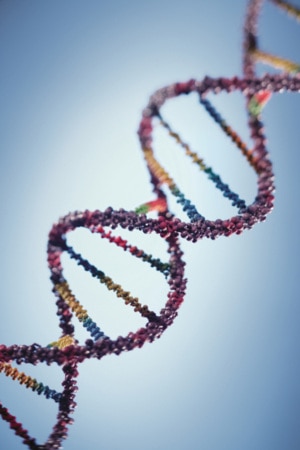Molecular Structures Provide Insight Into Key Players in DNA Damage Repair
 New research from scientists in NIDDK's Intramural Research Program has provided useful insight into the function of proteins involved in repair of damaged DNA. DNA is one of the basic building blocks of life, providing the genetic code to make every cell in our bodies. We encounter environments and situations daily that can damage our DNA, such as exposure to certain chemicals, UV radiation, and errors cells make in replicating their DNA. Additionally, some chemotherapeutic drugs intentionally damage DNA to effectively kill cancer cells. If left unchecked, DNA damage itself can lead to genetic alterations that can contribute to the development of several inheritable disorders and even some cancers. Therefore, the body uses different strategies to repair the various types of DNA damage, including one strategy called nucleotide excision repair (NER). NER involves several different proteins within the cell working together to recognize and cut out the damaged area of DNA. Understanding the details of this process could unlock new ways to treat or prevent some disorders and cancers.
New research from scientists in NIDDK's Intramural Research Program has provided useful insight into the function of proteins involved in repair of damaged DNA. DNA is one of the basic building blocks of life, providing the genetic code to make every cell in our bodies. We encounter environments and situations daily that can damage our DNA, such as exposure to certain chemicals, UV radiation, and errors cells make in replicating their DNA. Additionally, some chemotherapeutic drugs intentionally damage DNA to effectively kill cancer cells. If left unchecked, DNA damage itself can lead to genetic alterations that can contribute to the development of several inheritable disorders and even some cancers. Therefore, the body uses different strategies to repair the various types of DNA damage, including one strategy called nucleotide excision repair (NER). NER involves several different proteins within the cell working together to recognize and cut out the damaged area of DNA. Understanding the details of this process could unlock new ways to treat or prevent some disorders and cancers.
Using synthetic mimics of different types of DNA damage, together with proteins known to be involved in NER in humans, the researchers created detailed molecular images of the protein interactions with the damaged DNA site. Detection of damaged DNA in the cell can occur through two different pathways: through stalling of the process by which cells create RNA copies of DNA, or through recognition by a group of proteins that scan the genome for potential damage. These proteins are called xeroderma pigmentosum complementation group C, or XPC, named after one type of condition in which NER is compromised, resulting in extreme sensitivity to UV light. After recognition via either pathway, a new group of NER-related proteins is recruited to the site to take over the process of removing the damage. The researchers discovered that these proteins work together to separate the two strands of DNA, much like unzipping a zipper from the center, to create a space—or “bubble”—where proteins can confirm the damaged strand of DNA and cut it out.
The findings from this study have revealed key roles for several proteins involved in the NER process for repairing DNA damage. The importance of these proteins in maintaining health is highlighted by cases where compromised protein function is associated with certain cancers and disorders. NER is also thought to contribute to resistance to some chemotherapy drugs. This study’s findings could enable the development of more effective cancer treatments and potential genetic therapies targeting the NER process.
